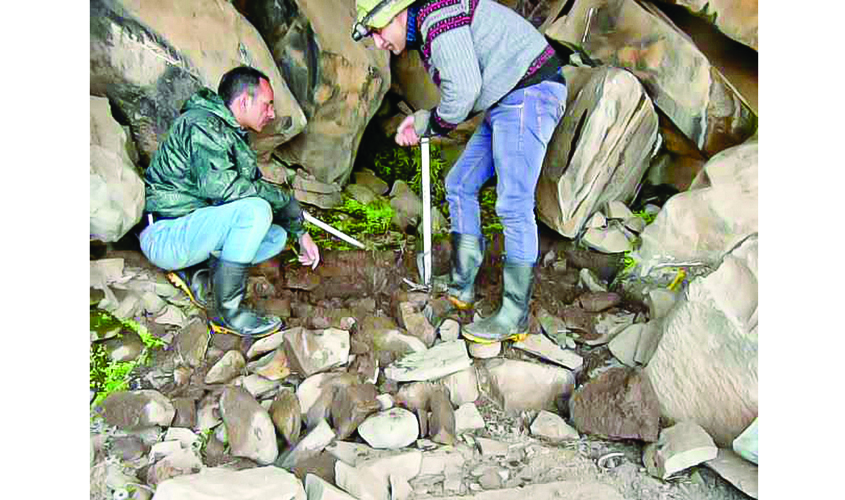Kashmir may have had human settlements as early as 6,000 BCE, claim researchers who have discovered pre-historic sites and material in North Kashmir that date back to the neolithic, megalithic, Kushan and the karakotta period. The researchers said their discovery suggests the valley had wider connections to South and Central Asian regions like China, Mongolia and Afghanistan than what is registered in history.
The research team from Centre of Central Asian Studies (CCAS) of the University of Kashmir told this newspaper that the material they have collected during their 10-day extensive survey done between 8 March and 18 March sheds light on the hitherto unknown fact that humans were living in Kashmir from 6,000 BCE till 800 ACE.
Talking to The Sunday Guardian, the head of the research
The two main researchers, Dr Ajmal Shah and Dr Mumtaz Itoo, both assistant professors at CCAS, are engaged in foreign collaborated projects to understand Kashmir’s connection with Central Asia. They aim to unearth the roots of the old Silk Route in North Kashmir, which served as the gateway to the valley.
Dr Ajmal Shah told this newspaper that they have also discovered the new North Arch of Kashmir on the left side of the Wullar Lake. He claimed that their study will herald a new chapter in the chronological development of North Kashmir.
“We also discovered two pre-historic cave sites at Yemberzolware, Kupwara in North Kashmir and at Turkpora village in Bandipora. We got Neolithic, megalithic stone tools, terracotta tile fragments, coins and pottery at these places,” Shah enumerated. He said the team was in the process of doing a detailed analysis of the unearthed material. Itoo said that they were trying to understand the type of settlements in North Kashmir and the migration routes that existed then.
Shah added: “North Kashmir, which was the only corridor for migration in the past, can provide us the real material buried in different villages which will finally lead us to the grand silk route connecting Kashmir to South and Central Asia.”
Talking about the material collected by them at Turkapora, Bandipora, he said the rock shelter site in this village has given a first-of-its-kind evidence of cultural sequence from the pre-historic to the early epochs of history—this village is nestled at the Gurez-Gilgat road which leads to Central Asia.
The researchers said they have found a large settlement belonging to the Kushan Period at Wizar village in Baramulla. Decorated tile fragments, unearthed during trial digging, shed light on the aesthetic sense of those people. In the forests of Trehgam village in Kupwara, fluted columns and stone blocks have been located. These material have been dug out from the archeological sites in Parihaspora and Tapar in North Kashmir and are dated 750 ACE.

